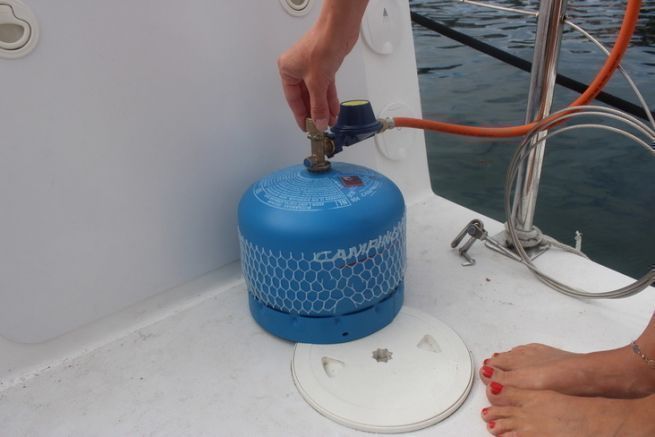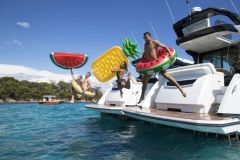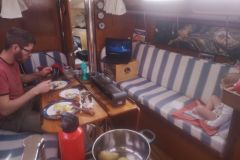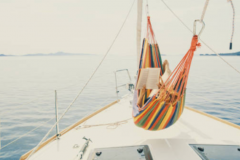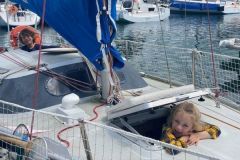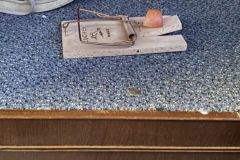In boats, appliances that use gas are primarily used for cooking ( oven or gas hob ), more rarely for heating or hot water production (these installations are most often found on river units).
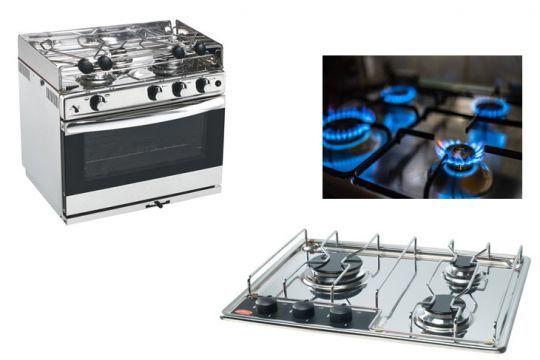
Butane or Propane, the main differences
Benjamin, website advisor " The gas store "The company provides useful advice for the safe and efficient use of gas on board boats. The company offers to all, private individuals as well as professionals, all the materials that allow to equip one's gas system: adapters, pressure gauges and accessories used by boaters in particular and all nomads in general.
" All bottled gas is either LPG, butane or propane, as distinct from natural gas. All butane/propane/LPG appliances can work with any of these gases, although it is best to follow the manufacturer's recommendations. LPG is also a mixture of butane and propane. The particularity of LPG is that it is the only one in Europe to be available in service stations "explains Benjamin.
In France, the use of one or the other had its heyday from the 1950s to the 1980s, when apartment buildings were built. It was only much later, at the turn of the 21st century, that the deployment of town gas experienced the current boom and that bottled gas saw its use decrease.
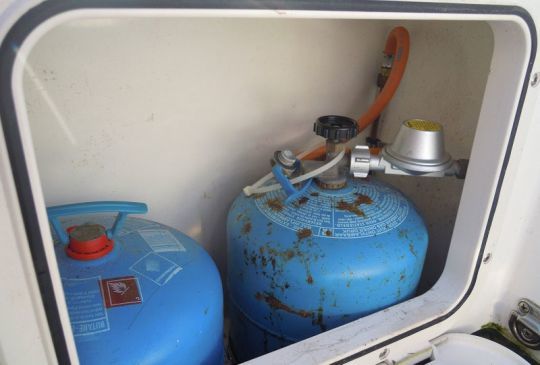
Benjamin explains, " If there is a difference between these two energy sources, it is the temperature at which they gasify. Or rather, the temperature below which they no longer pass from the liquid state (which allows their transport) to the gaseous state (which allows their use). Butane is effective in theory from a temperature of 0°. In use, it is more around 5 degrees, temperature at the level of the bottle, that it passes to the gaseous state. Propane is a little more resistant. Given in theory for a temperature of 40 degrees below zero, in practice it is around a negative temperature of 5 degrees that propane will have difficulty vaporizing. "
Propane Advantage
It is this ability to liquefy easily that makes these gases so convenient. Propane and butane are naturally gaseous at atmospheric pressure ( 1 bar ) and at room temperature ( 15°C ). However, they can easily be liquefied and are then qualified as LPG. This liquid state allows them to be handled, transported and stored in small volumes. Indeed, 1 liter of butane liquid releases 239 liters of gas and 1 liter of propane liquid releases 311 liters of gas .
" In terms of space efficiency, propane is the winner, offering almost a third more efficient gas than butane "adds the specialist.
Another element to take into account is the calorific value of these two gases. The efficiency of a fuel is expressed in PCI ( Lower Calorific Value ), unit of measurement without heat recovery ( water boiling vapors for example ).
- Butane has an ICP (in kWh/kg) of 12,66
- Propane has an ICP (in kWh/kg) of 12,78
Advantage, here again, to propane.
The last thing to consider is cylinder storage. " In all cases, the bottle should be stored upright, securely tied down so that it does not fall, roll or spill " begins the specialist. " Butane and propane are heavy gases, i.e. they are heavier than air and they first accumulate in the bottom of the boat. It is therefore necessary to store the cylinders, used or not, as high as possible to be able to detect, by smell, a possible gas leak. "
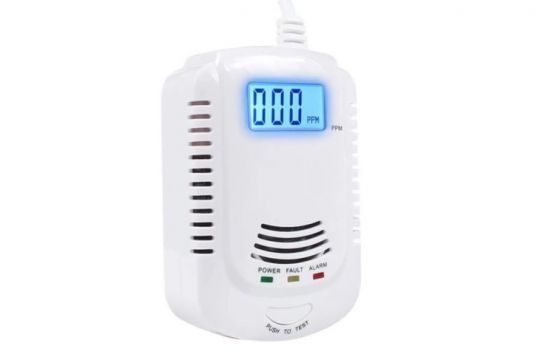
In addition to this olfactory detection, a gas detector can be added, which can be triggered earlier than a busy crew on deck.
Outdoor storage
To be safe and meet the standards in force, the cylinder storage room on board the boat must be ventilated at the top and bottom and located outside the cabin. The first one, located in the lower part of the storage room must be above the waterline.
" Of course, this storage is done in a closed and ventilated box, protected from sea water. Insulated, this cabinet will allow you to gain a few degrees before not being able to use your installation in winter and avoiding the important rise of temperature in summer. "adds the specialist.
The purpose of these precautions is to prevent the formation of explosive gas pockets.
Is the gas on board dangerous?
When properly stored and maintained, gas ( whether it is butane or propane ) is not dangerous in itself, as long as it is kept in its original bottle.
For it to burn, it is necessary that the concentration of gas in the air is between 2% and 10% . Below and above, the fire can not take, gas is not a fuel then. This does not exclude other risks, on the contrary.
The risk of explosion is high, especially in case of fire. This is why butane storage is allowed both indoors (on land) and outdoors ( pressure of 1.5 bar in the bottle ) where propane must be stored outdoors (pressure of 7 to 12 bars in the bottle).
Last but not least, the asphyxiation . It is to minimize this risk that these two gases have very specific odors. By replacing oxygen atoms in the blood, these gases cause slow asphyxiation which, in some cases, can be lethal.
This is the purpose of a gas detector, installed at sensitive points of the boat ( at the bottom of the hold, at the level of the floor of the euro cabins )
Only fill your gas cylinder as a last resort
Prohibited in France generally speaking, filling a gas cylinder is possible in certain regions of the world, particularly in Asia and South America.
Rather dangerous, the replacement of the empty bottle by another one is always preferable to filling it, especially if the boater is not used to doing it. However, the operation may be necessary for boaters on a long cruise.
This operation of filling a non-LPG cylinder can only be done with liquefied petroleum gas, never with natural gas . Moreover, this operation is not trivial. It is not enough to connect the cylinder to a filling gun as you would fill the tank of a car. To avoid, obviously, all the tinkering with a standard butane or propane cylinder to be able to fill it with LPG at the pump.
" To refill a cylinder, it is necessary to have different adapters that will first deactivate the non-return valve, then adapt the screw thread of the French cylinder to the screw thread of the foreign distribution station. Finally, a compensation mechanism must be put in place, allowing the gas present in the whole cylinder to [Editor's note: gases expand and always occupy all available space in a container] to compress and return to the desired liquid state. "explains Benjamin.
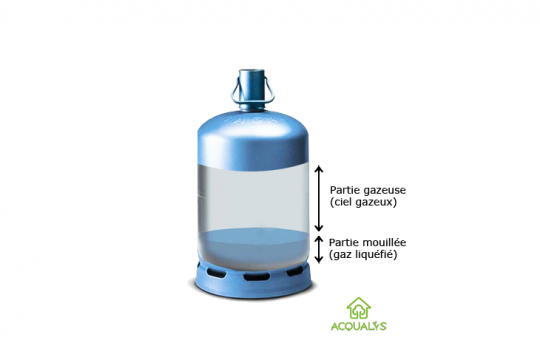
" Finally, in some regions, the gases distributed may be polluted with kerosene residues. This is especially true for appliances with a thermocouple, whose valve will become clogged. "In this case, it is wise to equip your installation with a kerosene filter .
What gases are available and where?
" Generally speaking, both gases are found throughout the world. In North America, however, propane only. Be careful too, some regions are so careless that you can sometimes, without knowing it, use a mixture of butane and propane. This is why it is important to consider your installation as to the more dangerous of the two it is important to use the most stringent safety precautions, including filling only cylinders intended for propane, which have a higher pressure. "
" A notable exception is South America where we take what we find without ever being absolutely sure of the nature of what we find! "Benjamin concludes.
Finally, all of these recommendations apply to bottles " traditional ". So, forget about clip-on systems (clipso, rapidoeuros). When boating, never use anything but fittings with screw in brass to the exclusion of all other solutions.
What about boputeilles Camping Gas widely used on board ?
The "Camping Gaz" equipment ( the blue bottles ) are of two types. The disposable ones are to be deposited, once empty of their content, in a specific container for the bottles. The others can be recycled by depositing them at a retailer. Despite some tips proposed on the internet and social networks, you should never try to refill these very specific bottles.

 /
/ 